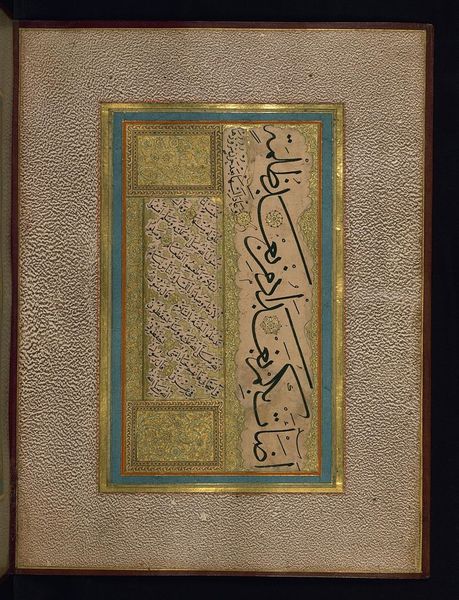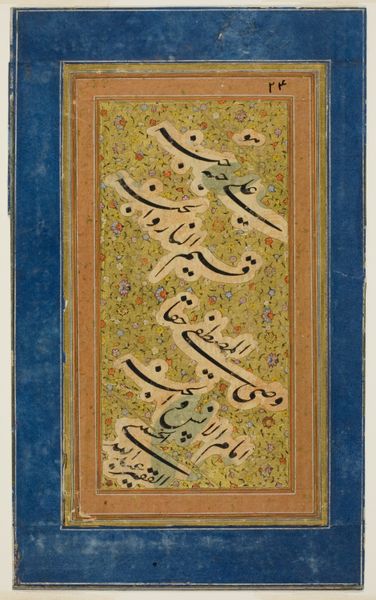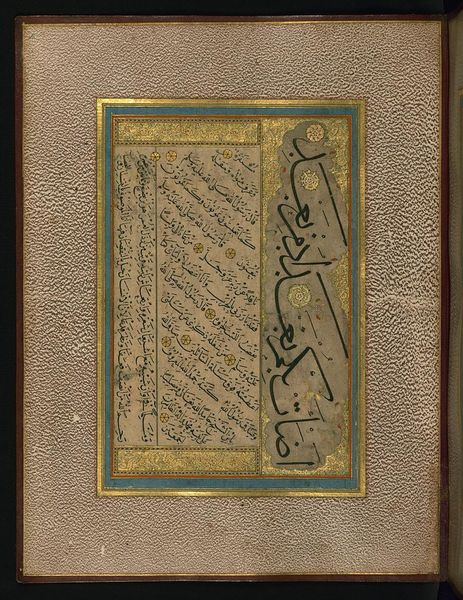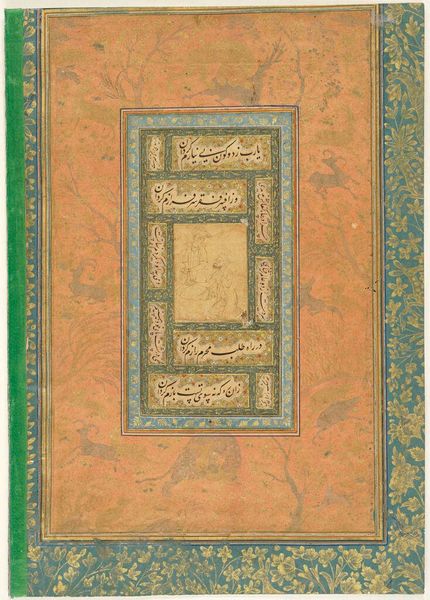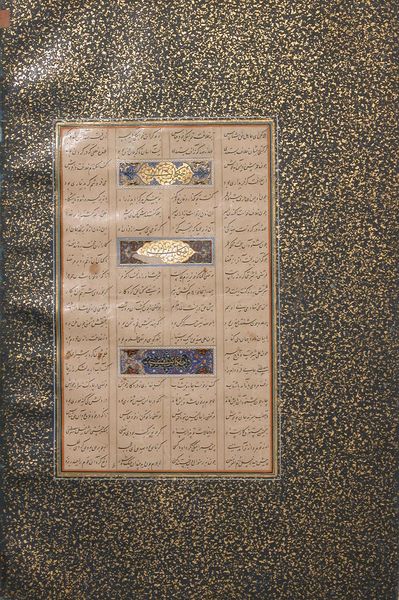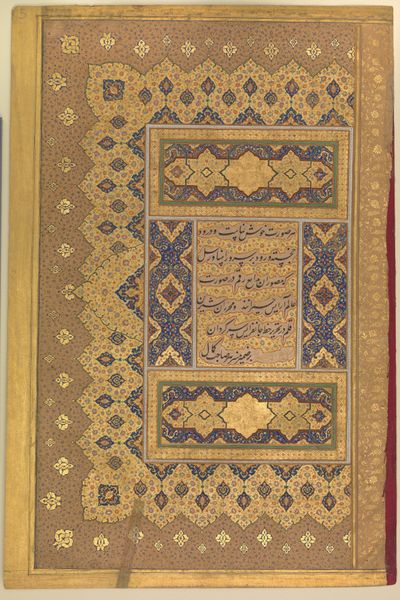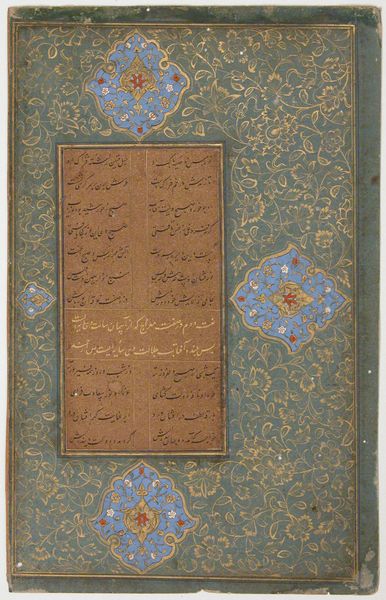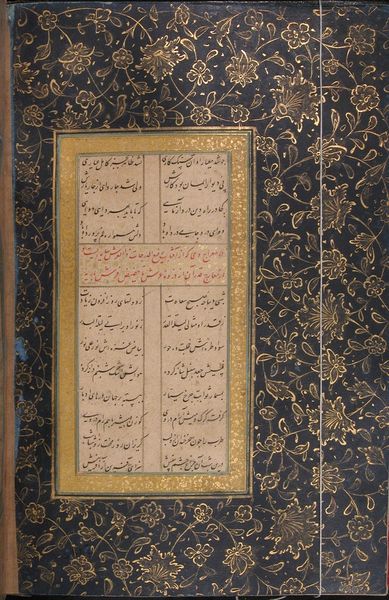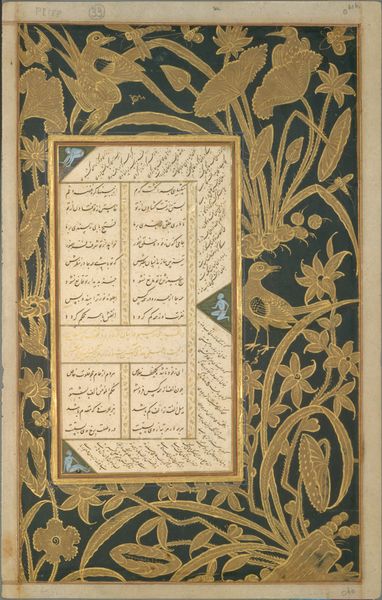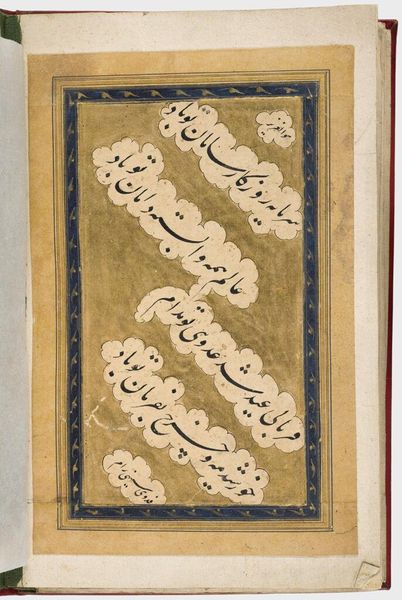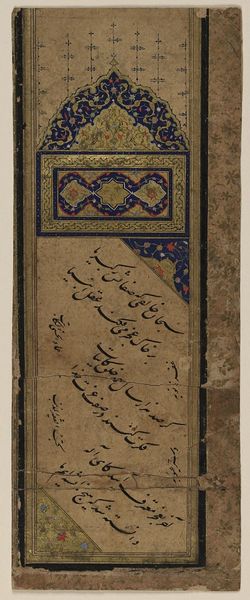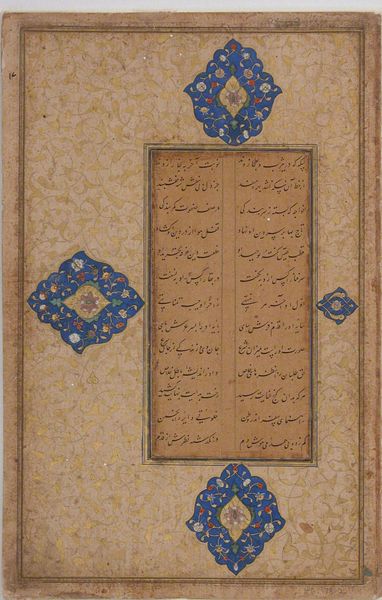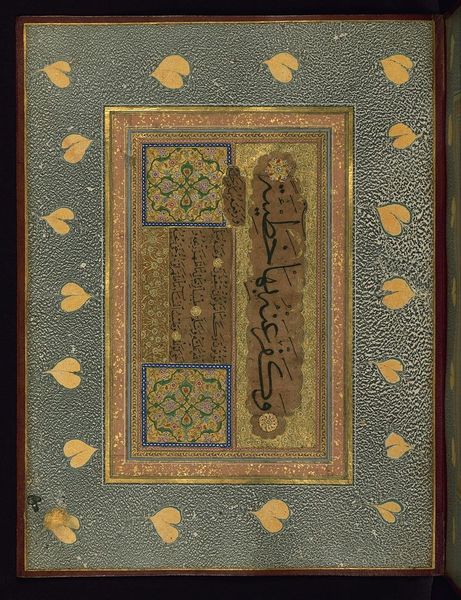
#
natural stone pattern
#
toned paper
#
water colours
#
pottery
#
mural art
#
handmade artwork painting
#
tile art
#
coffee painting
#
wall painting
#
watercolor
Copyright: Public domain
Curator: This artwork, entitled "Page of Ottoman Calligraphy," appears to be a manuscript page likely made with watercolor or a similar technique. The calligraphic elements dominate the composition. Editor: It strikes me as possessing a certain formal elegance, but there’s also something about the off-white color and stylized botanical patterns along the border that feels delicate and almost fragile. It feels a little muted, reserved, like an artifact deliberately distanced from contemporary commotion. Curator: Manuscript pages, particularly those containing calligraphy, were powerful vehicles of religious, cultural, and political authority. In Ottoman society, calligraphy wasn't just writing; it was a high art form linked directly to the transmission of sacred knowledge. How do you feel about this type of piece of art? Editor: I feel a clear tension, between the potential of an object to project power as a record and the subtle artistry behind its production and decoration, it hints at more personal gestures within a seemingly rigid hierarchy. Curator: Precisely! This visual balance encapsulates the cultural memory inherent in such works, bridging temporal gaps, connecting current viewers to traditions deeply rooted in Ottoman intellectual and spiritual life. This continuity allows audiences to grapple with the ever-changing nature of knowledge across centuries. Do the various symbols and imagery resonate with you in unique ways? Editor: Considering its place in a museum setting, the 'Page of Ottoman Calligraphy' turns into more than a historical relic, wouldn’t you agree? It's a statement about the value systems the institution wants to promote – tradition, artistic skill, religious devotion – carefully positioned to influence our understanding of the past and maybe even the present. Curator: I concur completely. Understanding its place and its ability to be moved through society gives us the chance to examine cultural endurance and transformation in the context of modernity and globalization, with respect to its original time. It becomes part of an ongoing dialogue spanning art, identity, and socio-political interpretation. Editor: Thank you for your very perceptive cultural and historical overview of it. Curator: Thank you as well. The experience was rather delightful!
Comments
No comments
Be the first to comment and join the conversation on the ultimate creative platform.
